The Strait and Narrow
To tour Shodoshima, the second largest island in the Seto Inland Sea, my husband and I hired a driver for the day. I knew beforehand that he would speak no English, and I worried about how well we would be able to communicate. Actually, it went better than expected. Most of the time, he spoke slowly and clearly enough that I could follow along.
Then he pulled up alongside a railing and announced with great pride that it was the world's narrowest かいきょう. The narrowest what? He repeated it three times: かいきょう. That didn't help at all.
He kept using 狭い (せまい: narrow), which I knew quite well from essay 1166 on 狭. But I had no idea how to apply it to this situation.
My husband and I peered over the railing into pale green water and took guesses.
The narrowest bridge? The narrowest canal? The shallowest water (just to cover all bases)? The narrowest distance between arches in a series of unnecessary arches? (Okay, we didn't actually ask him about that last one!)
All wrong. How I longed to see the kanji for かいきょう.
Then the driver pointed out some signs. Aha! Why hadn't he done that from the beginning?
The first sign helped me grasp the reason for his excitement. The island on which he had lived all his life had scored a place in the Guinness Book of Records.
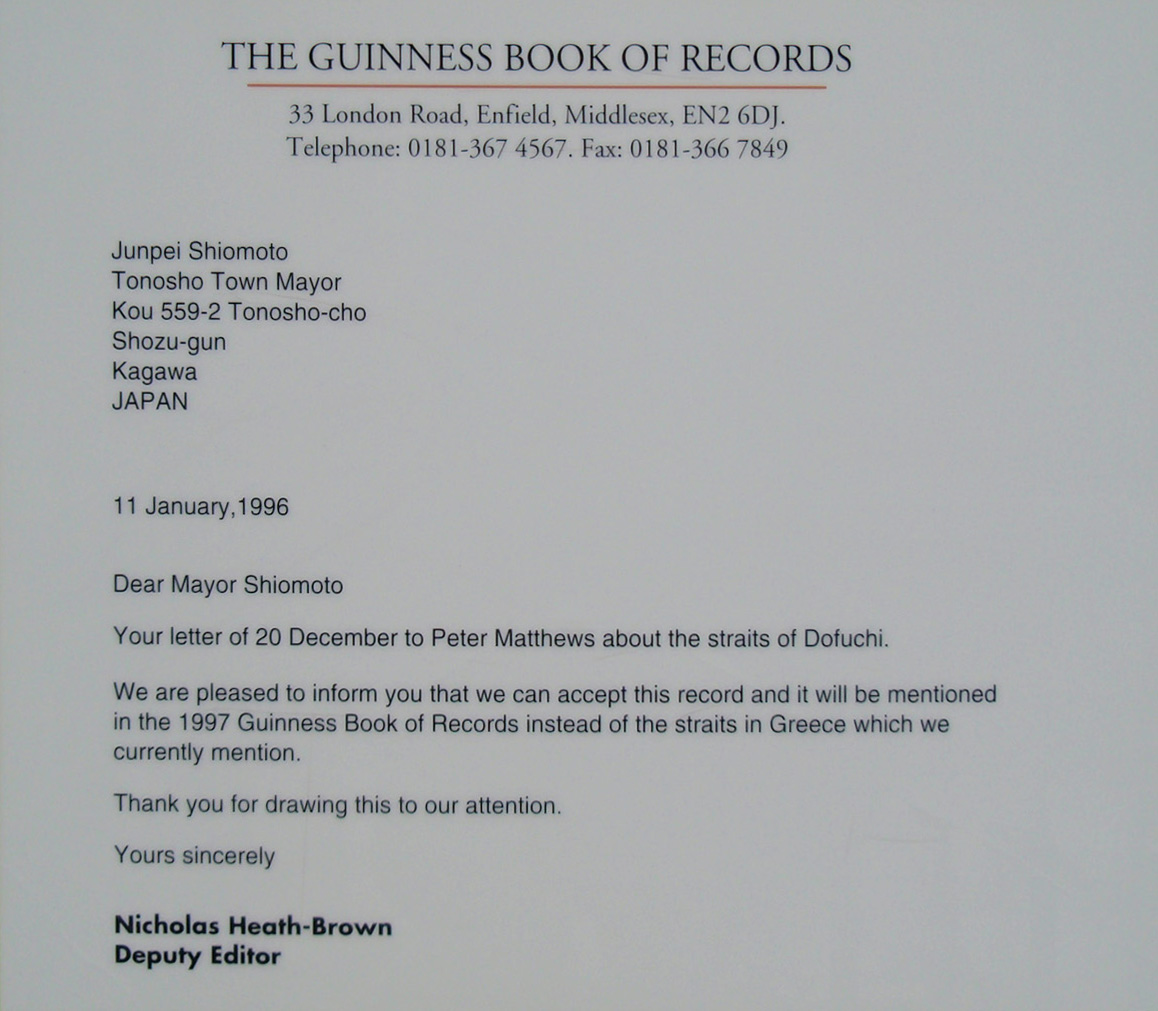
In fact, we had arrived at the world's narrowest strait, as the next sign explained.
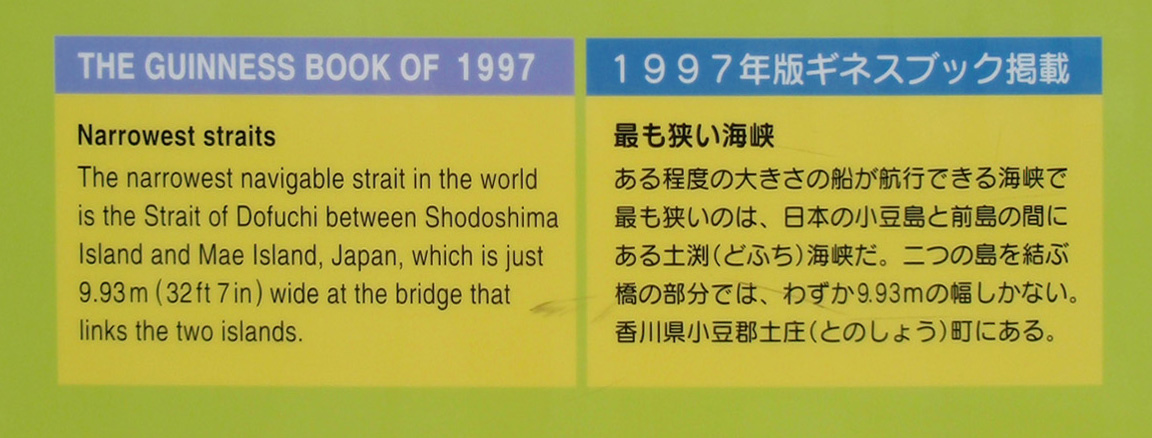
Moving to the Japanese version of this text, I finally saw (in the first black line) the kanji for かいきょう, which is 海峡.
Oh!!!
I felt as though I understood so much more. To tell you the truth, I wasn't entirely sure what "straits" meant, but the characters explained it to me nicely: sea + something squeezed between mountains.
Of course, something squeezed between mountains is not the exact definition of 峡, which actually means "gorge, ravine." But the blue definition is what I vaguely recalled as I gazed at the sign and thought back to the time when I had read Henshall's etymology of 狭 for essay 1166. He had drawn helpful connections between the following three kanji:
峡 (1164: gorge, ravine)
挟 (1165: to insert, pinch, squeeze between)
狭 (1166: narrow)
In every case, he said, the 来 on the right side originally took the form of 夾, a non-Joyo character meaning “to insert between.” This older character portrayed a big person, 大, squeezed between two other people, 人. Think of your usual airplane seating arrangement!
By the way, in a beautiful example of the on-echo (defined in the next-to-last section of the glossary), 峡, 挟, and 狭 all have the on-yomi of キョウ. That is, the repeated shape 来 carries sound (キョウ) as well as meaning in these kanji.
If we return to 峡, we find a ravine or gorge to be something inserted between (来) mountains (山). That "something" is negative space. No wonder I had only a vague memory. It's hard to remember nothing!
As you look at the map below, note the mountainous topography and the red label pointing to the strait. The sea in that strait is indeed squeezed between mountains! So 海峡 is just the right term.
But is "strait" the right word for this narrow strip of water? The dictionary primarily defines "strait" as a "narrow passage of water connecting two large bodies of water." Does the Strait of Dofuchi match this definition by connecting two large bodies of water? Hmm, I don't see it. The water is the same all around—the Seto Inland Sea. Instead, we find a narrow passage of water between two separate islands, with tiny 前島 (まえじま) on the left in this picture and much larger 小豆島 (しょうどしま) on the right.
You can see the relative sizes of the islands better in the next photo, which also includes some tantalizing kanji.
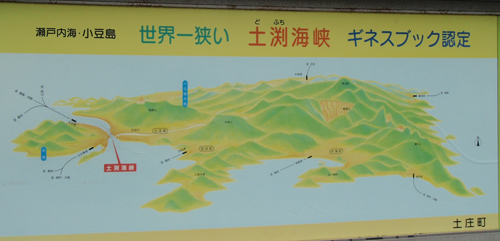
Photo Credit: Eve Kushner
The heading offers a lovely repetition of the 来 shape. That is, both 狭 and 峡 appear in the top line, as if to provide a visual bridge between these related kanji. And at the bottom, we find a repetition of the 土 shape in the town name 土圧町 (とのしょうちょう), as well as a repetition of the vowel sound.
Here are the largest words in the sign:
瀬戸内海 (せとないかい: Seto Inland Sea), where 瀬戸 actually means "strait; channel" and in fact evolved from the word 狭門 (せと: narrow gate)!
小豆島 (しょうどしま: Shodoshima)
世界一 (せかいいち: world's number one)
狭い (せまい: narrow)
土渕 (どふち: name of the actual strait)
海峡 (かいきょう: strait)
認定 (にんてい: recognition, authorization)
I've just returned to the dictionary's definition of "strait." The second definition has to do with "dire straits." The band?! No, no, it's "a position of difficulty, distress, or need." That meaning must have spun off metaphorically from being in a tight spot, so to speak.
Okay, I've finally looked up 海峡 in Breen, instead of relying on how the English sign equates this word with "strait." Breen does offer "strait" as a second definition of 海峡. His first meaning is "channel (e.g., between two land masses)." That fits much better.
And what about the name of the strait, which I've neglected until now? Oh, what fun! It's 土渕 (どふち), which breaks down as ground + edge (with the second kanji being non-Joyo).
So this strait, which is a "ravine in the sea," is at the edge of the ground. Clever! And it would be absolutely true if the walls of the 海峡 weren't lined with concrete!
One more thing. When I was browsing the scads of photos I brought back from Japan, I came upon this one, which I took in Shinjuku three days before the Shodoshima trip:

Photo Credit: Eve Kushner
Look! Kaikyo! And 海峡! Moreover, they were thoughtful enough to show us the old form of the component on the right side of 峡! Here are the smaller kanji:
珈琲 (coffee)
洋風 (ようふう: Western-style)
居 (い: to stay, sit)
食 (しょく: meal)
屋 (-や: shop)
At this venue, which offers coffee and Western-style meals, 居食屋 (いしょくや) is a play on 居酒屋 (いざかや: bar, pub, tavern). The coined word emphasizes the food (食) part of the experience.
If you haven't had your fill of photos in today's JOK Notebook, you can gorge yourself on more in essay 1731 (碑: inscribed stone monument; tombstone), which I've just posted. It's 19 pages long, but there's relatively little text. Instead, beautiful photos of all sorts of monuments fill the pages, along with captions that burst with information. Here's a preview:
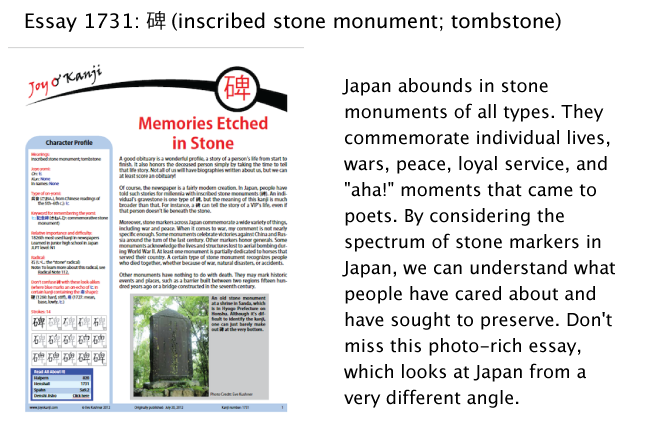
Have a great weekend!


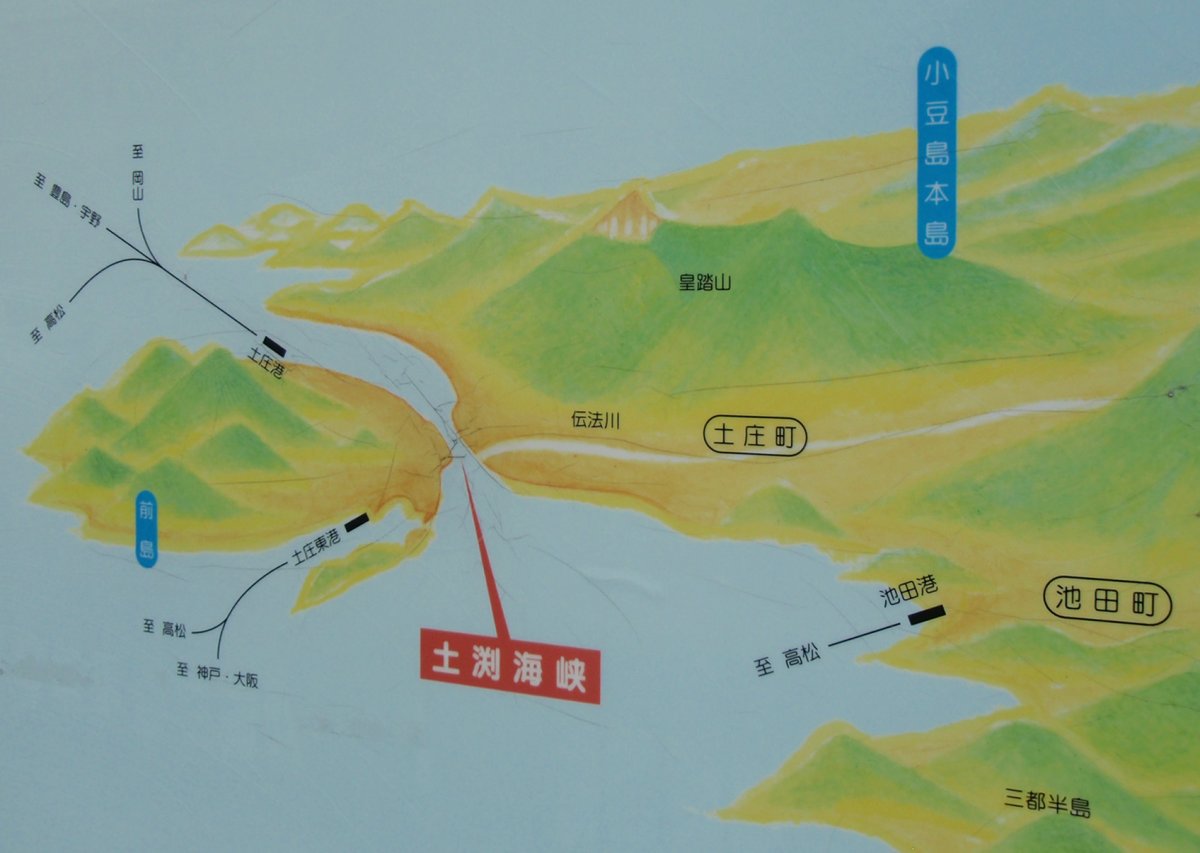
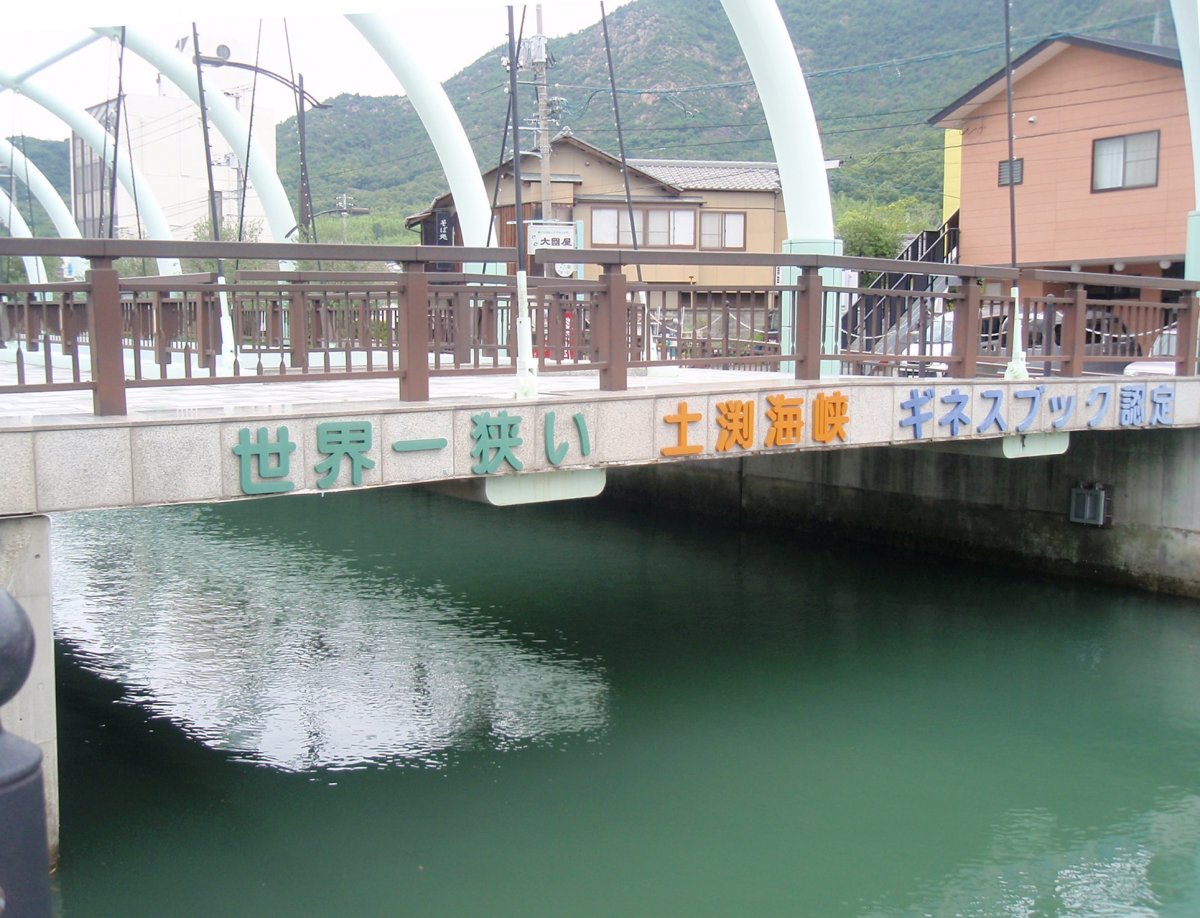
Comments